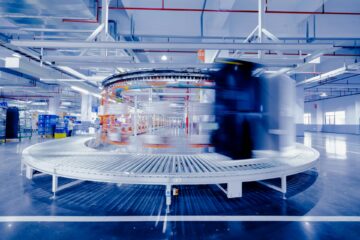In demanding industrial environments, maintaining optimal equipment temperatures is critical. It’s not just about avoiding overheating—it’s about protecting performance, extending equipment lifespan, and avoiding downtime. Predictive thermal management has emerged as a proactive strategy that helps facilities catch potential failures before they happen, keeping operations smooth and cost-effective.
Thermal Imaging: Catching Problems Before They Escalate
Infrared thermography is a frontline tool in predictive maintenance. By capturing surface heat patterns without halting operations, thermal imaging helps teams identify abnormal temperatures, electrical faults, and early warning signs of mechanical failure.
When technicians interpret this data correctly, they can take swift action—whether it’s replacing a component, adjusting airflow, or modifying lubrication. These timely decisions reduce the risk of costly breakdowns and keep production on schedule.
Material Integrity Under Heat
Not all materials are built for extreme temperatures. Choosing the right components—especially for high-heat applications—is essential.
- Borosilicate glass offers strong heat resistance, tolerating temperatures up to 932°F (500°C).
- Glass-ceramics like PyroCeram® and NeoCeram® can handle even more intense conditions, withstanding up to 1470°F (800°C).
This matters not only for visibility panels or housings but also for electronic systems, where microchips and circuit boards have strict thermal limits. If temperatures climb too high, damage can be permanent—making continuous temperature tracking a must.
Turning Data Into Predictive Power
Thermal monitoring becomes even more powerful when combined with other diagnostic techniques. Layering data from:
- Vibration analysis
- Motor circuit testing
- Oil condition monitoring
…gives a more complete picture of equipment health. These combined insights help teams create smarter, more targeted maintenance schedules, reducing both unplanned repairs and unnecessary servicing.
People Power: Training Makes the Difference
Technology provides the tools, but human expertise ensures they’re used to their full potential. Maintenance personnel must be trained not only in how to use thermal imaging devices but also in interpreting the results and taking appropriate action.
Continuous training ensures teams are prepared to make data-driven decisions and stay current with evolving technologies in thermal diagnostics.
Long-Term Wins From Proactive Heat Management
Predictive thermal control isn’t just a maintenance tactic—it’s a long-term investment in equipment health and business continuity. Companies that prioritize it benefit from:
- Fewer emergency shutdowns
- Longer equipment life
- More predictable performance
- Lower repair and energy costs
By adopting a proactive approach to thermal management, organizations can future-proof their operations and reduce vulnerability to costly disruptions.
For more information on thermal management in predictive maintenance, please check the accompanying resource from Linseis, a provider of thermal analysis equipment.












